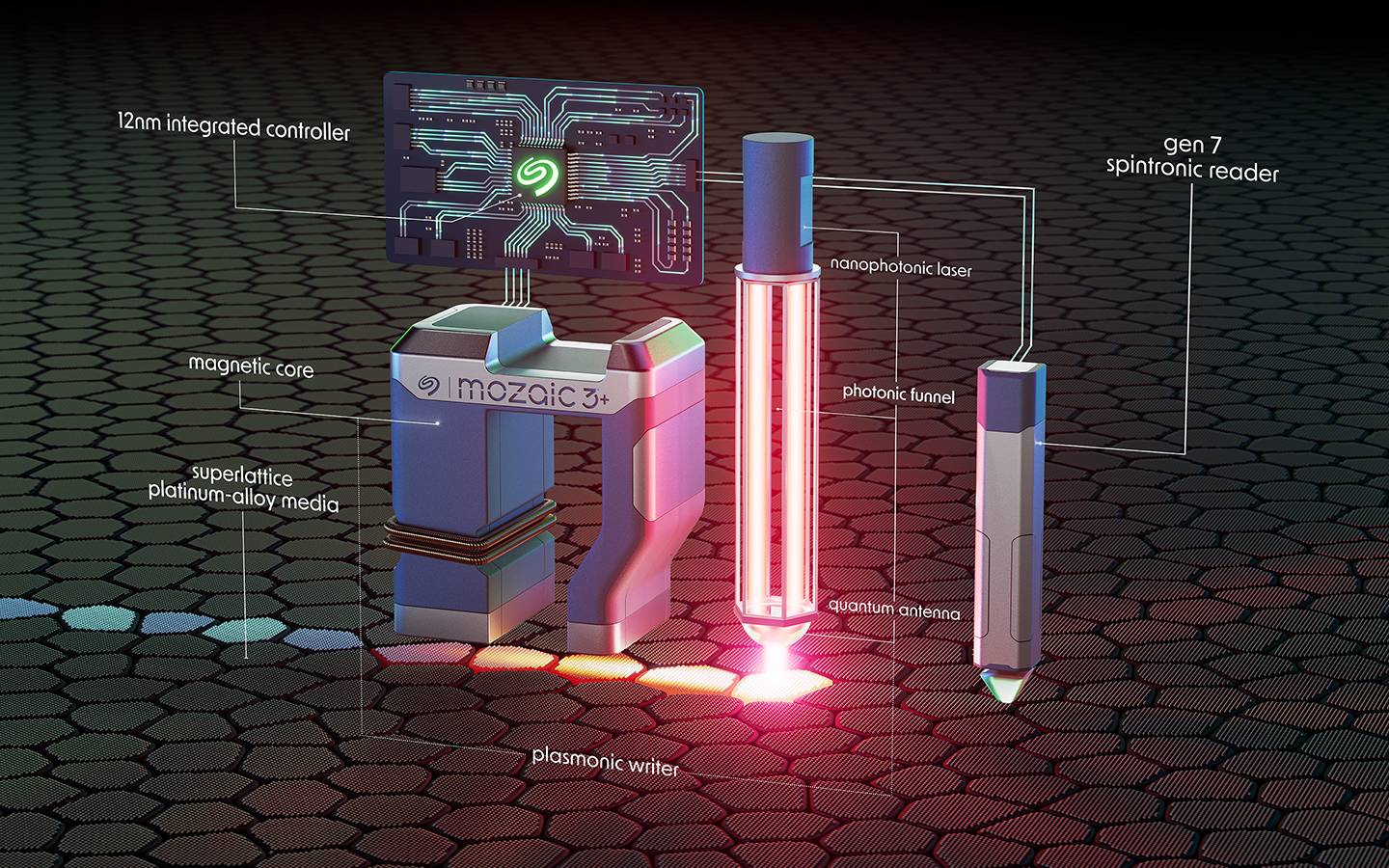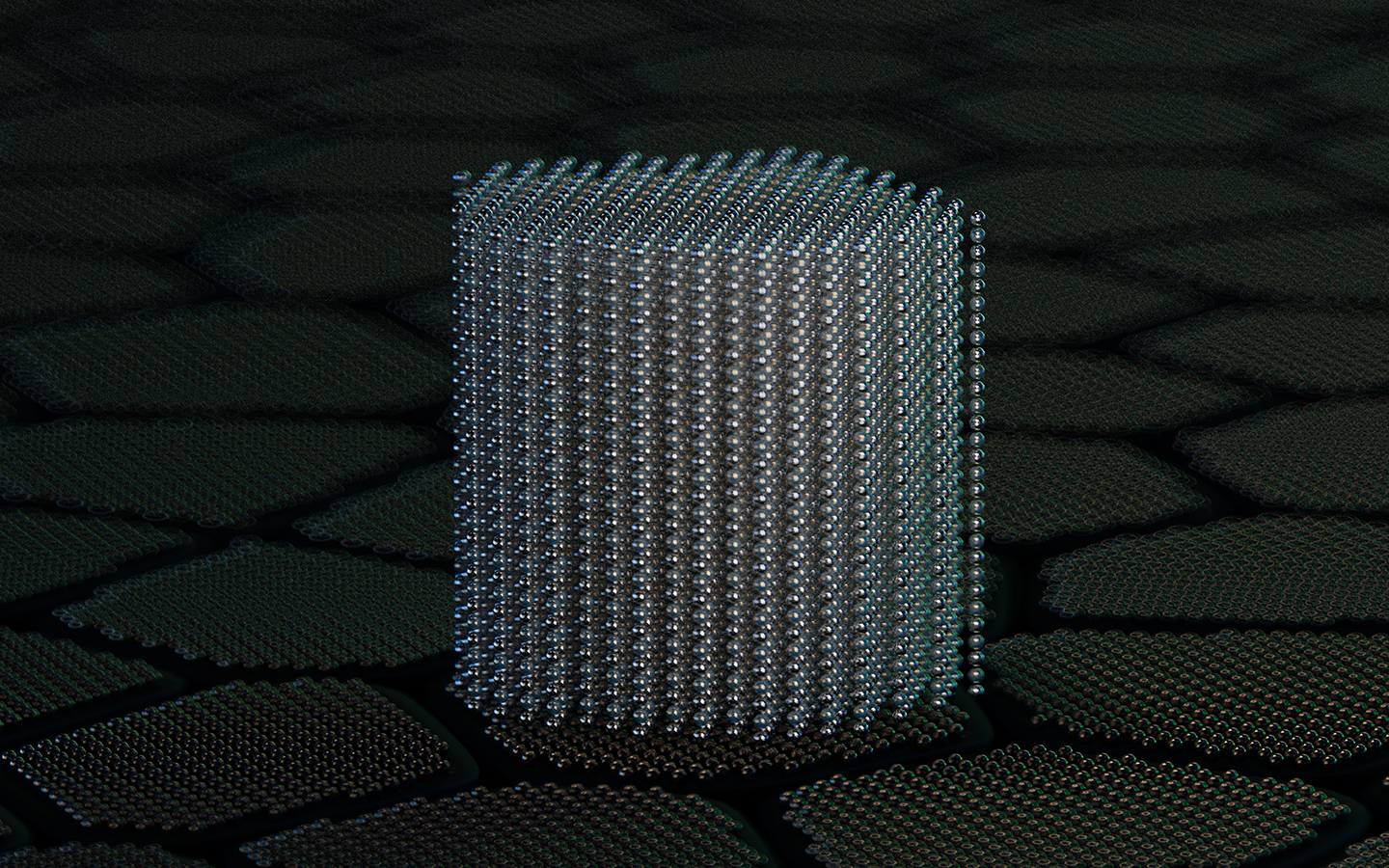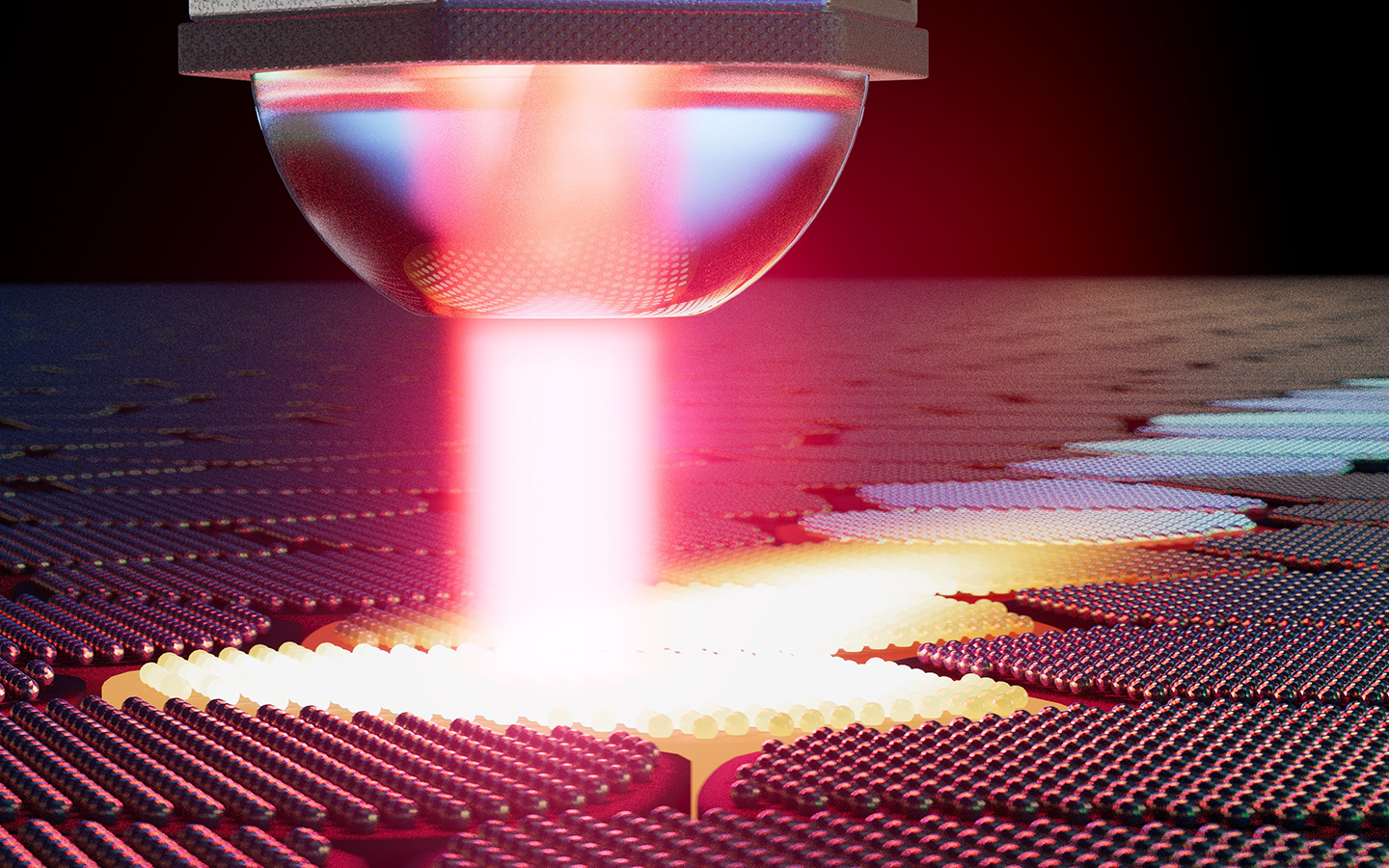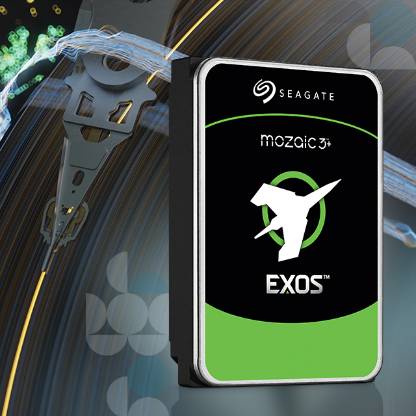After more than a decade, the long-awaited breakthrough in HDD technology is here
It was supposed to happen last year, but it wouldn’t be HAMR if the technology wasn’t always further away from market than expected. However, we finally have the official announcement of the first of these “laser” HDDs, the arrival of which kept being anticipated and then delayed over and over for the last decade or more. HAMR drives use amazingly advanced nanotechnology, but according to Seagate, their reliability has been carefully tested.
The first commercially released HAMR drive is the 30TB Exos server series model. Previous reports spoke of 32TB capacity, so a bit less spacious SKU was announced in the end. However, according to eagate’s website, a 32TB Exos will also be offered, the caveat is that this capacity is using SMR.
The drive is based on the HAMR platform, which has been named “Mozaic 3+” (the 3+ could be based on capacities exceeding 3 TB per platter) by Seagate. Volume shipments of these drives to leading cloud server providers are already scheduled to run now in the first quarter of 2024. They are apparently used by Dropbox, for example. We don’t yet know specific prices or dates when the drives could be available for purchase on the open market.
How does HAMR work?
HAMR technology is based on the concept that a laser beam source is added to the arm carrying the write and read heads, which is used to irradiate the place in the magnetic track to which the writing head (consisting of an electromagnet) subsequently performs the write. The laser heats up the material on the position within nanoseconds, so that writing takes place at the elevated temperature of the recording material.
The reason why this is necessary is the increasing difficulty of creating a stable magnetic recording as the size of the recording track and the magnetic grains that make it up decrease. Smaller grain size makes the stability of the recording worse because the magnetization is more easily lost (affected by the environment). The platters of HAMR drives use a material with increased magnetic coercivity, which is a physical quantity indicating how well a magnetized material is able to resist demagnetization due to another external magnetic field. With a higher coercivity, it is harder for outside factors to “flip” the stored bit. This allows the dimension in which a single bit is stored on the track to be shrunk, further increasing the recording density (the bits are both smaller and closer to each other). This would no longer be possible with conventional technology because the recording would not be stable.
The problem with the fact that the stability of the recording deteriorates as the physical size of the bits on the platter decreases has another side – it becomes hard to magnetize a given spot strongly enough to make the recording stable (and not damage the recording in the surrounding bits when you ramp up the magnetic field strength used for the purpose). Overcoming this problem is the central goal of HAMR technology and its integration of the laser aparatus. Irradiating the to-be-written spot with the laser and increasing the temperature at that spot will change the properties of the recording material, temporarily significantly decreasing its coercivity. The temperature is increased to more than 800°F (427 Celsius, the exact temperature is supposed to such that it is above the Curie point where the substance loses its ferromagnetic properties, through a phase transition), which takes less than two nanoseconds, and in this condition the recording head, consisting of an electromagnet and placed behind the laser, can magnetize the magnetic grain to the desired value. This is done very quickly, and the precise timing and spatial accuracy of the mechanism are also said to be critical element to the mastering of this technology.

After cooling down, which should happen very quickly (the energy volumes at play are not large given the nano-scale size of the physical footprint, but the drive is actually specifically designed to be able to dissipate the heat that results from the heat-assisted writing), the coercivity rises again and protects the recorded value from that point on, because without the application of a laser, the magnetic field applied from the outside (which can be either the recording head working in a nearby track, or some externally applied electromagnetic field) does not have enough force to de/remagnetize the magnetic grain. According to Seagate, this actually means HAMR produces a more reliable recording. The action of the laser is supposed to be very precise, targeting only the magnetic grain that is to be written to without affecting the surrounding area (which could compromise existing recorded data in nearby grains). Reading these recorded bits, on the other hand, is not as complicated and is relatively conventional. The laser is no longer used in the reading process.
Some time ago, the rival Western Digital company announced its MAMR technology, which was supposed to be an alternative to HAMR which applies microwave radiation instead of heating the recording surface with a laser beam. Initially it looked like MAMR could actually solve the problem of “energy assisted” recording more elegantly, without the extreme complexity of HAMR. But it turned out that Western Digital ended up bringing this technology into practice only in a simplified form called EAMR, which basically just enhances the magnetic field effect of the write head and doesn’t seem to have much of an impact on recording density. So, at least for now, it has failed to produce an alternative solution to HAMR, although it is possible that an improved full-fledged implementation of MAMR with more significant effect may yet emerge in the future. It has to be said though that Western Digital is also planning to productise HAMR in its roadmap, so it looks more and more likely that HAMR has emerged as the winning solution. After all, HAMR made it to commercial implementation first now, through Seagate. This also gives Seagate an important technological lead and a head start in the high-capacity HDD market. It will be interesting to see how long will it take the remaining competitors (there’s also Toshiba in addition to WD) to get their own HAMR drives to the market.
Innovations in materials science and quantum nanotechnology
Bringing HAMR to commercial reality required all sorts of innovations in the technologies used. The superlattice-structured platters use an iron-platinum alloy (they were developed in collaboration with Showa-Denko) and are produced by epitaxial growth, which produces thin films of this alloy on a glass substrate that form a pattern on which the magnetic grains self-organize themselves into the necessary structure.

The drive uses a special in-house developed controller by Seagate which is manufactured using a 12nm process (which puts it at the same technological level as the controllers used by current leading SSDs). The controller silicon features custom RISC-V cores, uses LDPC ECC, can automatically perform track re-reads and calculate adjacent track impact compensation, and has specially designed interfaces that enable it to drive servos on the actuator arm with increased precision.
Reading the Mozaic 3+ platters is performed by a seventh generation “spintronic” read head, while writing is performed by a “plasmonic” write head with a laser. The laser integrated next to it has to be very miniaturised (Seagate refers to it as “nanophotonic”) because it moves over the platters together with the heads, so it has to fit entirely in a vertical space of less than a millimetre. Underneath the laser there is a “funnel” structure and under it a “quantum antenna”, these structures direct the beam in the necessary direction. When the laser hits the surface of the plate, “plasmons”, quantum oscillations of electrons, are produced in the irradiated magnetic grain. All these components are demanding in terms of precision in production and operation and require specially developed materials.

HAMR technology can be combined with other existing improvements – in addition to helium filling, two-stage/three-stage actuators can be used and, as mentioned, it is also still possible to use SMR (shingled recording) to further increase capacity.
Seagate Exos Mozaic 3+ 30TB
The Seagate Exos 30TB drive uses a classic 3.5″ design (which means it’s form factor is basically equivalent to a desktop HDD) and is based on helium technology (it has a hermetically sealed casing, the inside of which is filled with helium, which, due to its lower viscosity and density, provides less resistance to the rotation of the platters and the movement of the actuator arms with heads). There are 10 platters inside, which therefore have a capacity of 3 TB per platter. The drive has an average operating power draw of 10.5 W, slightly higher than that of a 16TB Seagate Exos conventional drive. However, when taking into account the capacity provided, the HAMR ends up performing more efficiently.
The 30TB Exos is just the first of the HAMR drives to come. Seagate says it expects to see an annual improvement in HDD capacity of up to some 20%, whereas in recent years the aggregated improvement has been as low as 8% per year with the current conventional recording technologies. In the coming years, capacities of 4 TB or more per platter (Mozaic 4+ platters) and 5 TB or more (with Mozaic 5+ platters) should be achieved, which would mean total capacities of over 40 and 50 TB (in a 10 platter helium-filled drive) will be possible.

Reliability should meet all standards (even with a margin)
During more than a decade of development of HAMR drives, reliability concerns have been raised by external voices, over and over. The integration of lasers, high temperatures involved (albeit only occuring locally at a nano-scale) and complicated operation is is a valid cause for scepticism, so this was only natural. According to Seagate, however, it was precisely the long development process that that has validated HAMR technology. The earlier HAMR demonstrators and today’s Exos 30TB drives were put through all the tests and are supposed to provide the same reliability guarantees as all the conventional HDDs (Exos 30TB lists the same realiability figures – mean time between failures of 2.5 million hours, five-year warranty, 550TB writes per year rating). But these are only the minimum specifications.
The Mozaic 3+ platter technology and associated write and read technology have reportedly been tested for reliability and the ability to retain recorded data since 2016, including testing under increased vibration and shock. Seagate says that in that testing of HARM, they went well beyond the scope of normal practice and applied requirements that are 20 times stricter than what the specifications of conventional commercial HDDs demand and what the customer require.
Seagate reports that during the development process, the company produced more than half a million HAMR drives of several generations (with the previous ones preceding Mozaic 3+ not making it to market officially) that already met performance, power efficiency and reliability requirements for long-term use. In addition to internal testing, external clients were also involved in the trials. This hopefully means that HAMR is now truly debugged and field-proven and to the point where the technology can replace conventional HDDs in any normal usage cases.
Source: Seagate
English translation and edit by Jozef Dudáš
⠀








